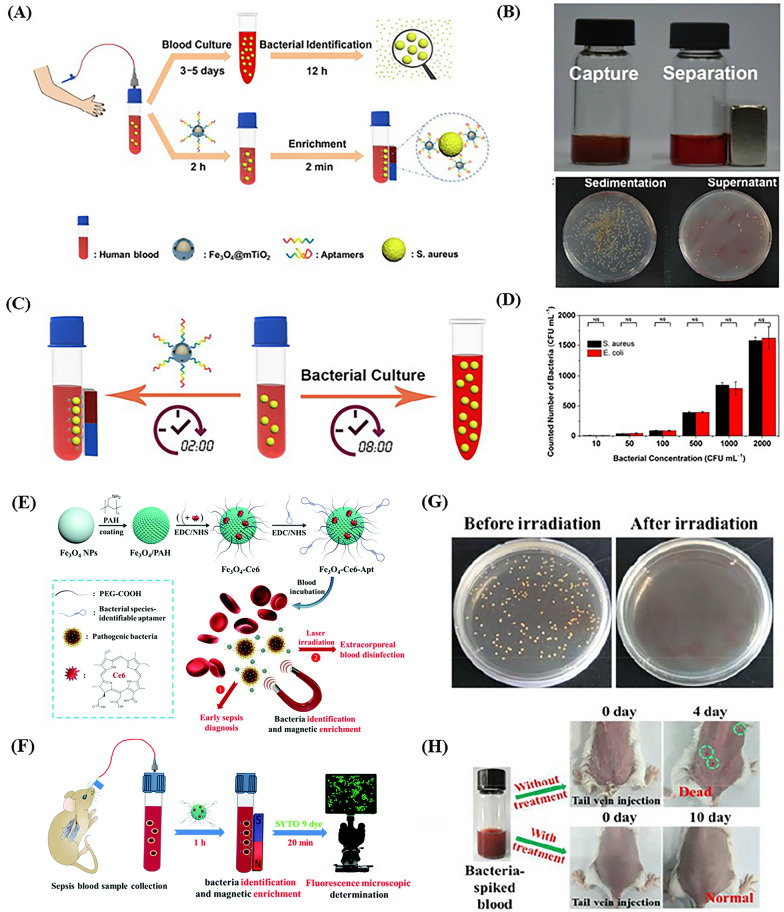Fig. 5.
The Apt-Fe3O4@mTiO2 nanosensor (A–D). A Conceptual strategies to enrich and identify pathogenic bacteria in human blood. Top: conventional blood culture. Down: the aptamer-based capture platform. B Photographs and agar plates showing the bacteria capture with and without a bar magnet. C Schematic representation of detection time for enriching and identifying pathogen in human blood samples based on that aptamer-based capture platform (left) and conventional blood culture (right). D Bacteria counted numbers enriched by Apt-Fe3O4@mTiO2 nanosensor at a low concentration range (10–2000 CFU/mL) [45]. The Fe3O4-Ce6-Apt nanosystem (E–H). E Schematic illustration of strategies for early sepsis diagnosis and extracorporeal blood disinfection based on Fe3O4-Ce6-Apt nanosystem. F Illustration of the process of Fe3O4-Ce6-Apt nanosystem-based strategy for the bacterial enrichment and identification within 1.5 h. G Agar plate photographs for live bacterial units. The blood samples containing S. aureus (106 CFU) were incubated with Fe3O4-Ce6-Apt nanosystem before and after NIR laser irradiation for 5 min. H Photographs of the mice transfused with the blood samples containing S. aureus (106 CFU) with and without disinfection treatment at different times [68]

